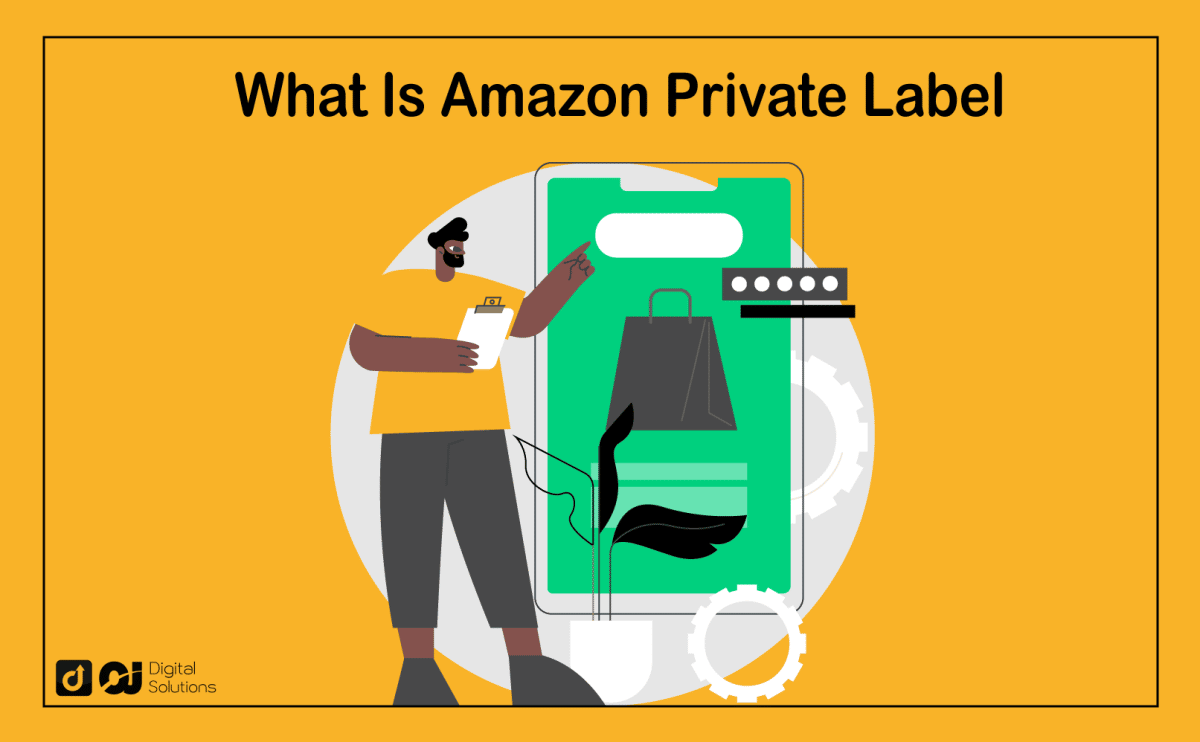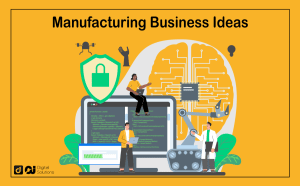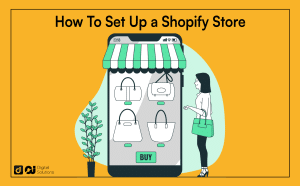What is Amazon private label?
You’ve come to the right place for answers.
As a veteran Amazon seller and Amazon listing service provider, I know what it takes to succeed on the platform, and I want to share that knowledge with other aspiring Amazon sellers like you.
I wrote this guide to discuss Amazon private-label products, how they work, how to sell private label on Amazon, and its pros and cons.
Let’s begin.
What Is Amazon Private Label, and How Does It Work?
Let’s begin with the basics of Amazon Private Label.
Private labeling involves taking a generic product, modifying or customizing it to make it your own, and selling it under your unique brand.
Private labeling differs from white labeling, where vendors sell another manufacturer’s product and add their branding and packaging. With private labels, sellers must put a unique twist on the product or upgrade it.
You’re not selling a brand with a private label; you’re putting your own brand on the product manufactured by another party.
Costco’s Kirkland Signature brand is an excellent example of a private-label product. Through this private-label brand, Costco can offer customers products similar to prominent brands but at much lower prices.
How Does Amazon Private Label Work?
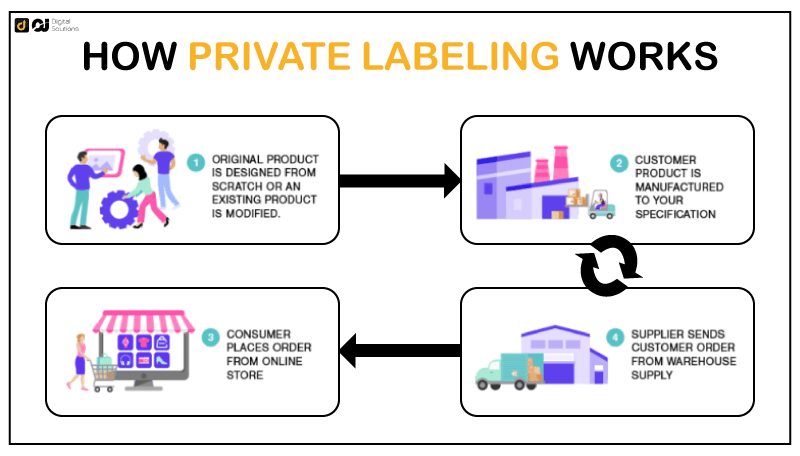
Private labeling on Amazon works the same way as private labeling on other marketplaces.
Amazon private-label products are from third-party manufacturers that sell you those products without branding.
As part of your private-labeling agreement with the manufacturer, you are free to add your own branding to the products. You can add your brand’s logo, slogan, packaging, and other branding elements.
Your manufacturer has no rights over these products. They only manufacture the products for you and can’t sell them elsewhere.
With private labeling, sellers don’t divulge manufacturer details to customers.
You can source your branded products on Amazon from suppliers on Alibaba, AliExpress, or NicheDropshipping. However, your customers would not have any idea about your supplier because it’s your branding that’s visible, not the supplier’s.
Hence the term “private” in private label.
How To Create a Private Label on Amazon
Here’s how to create your product and start private label Amazon selling.

1. Choose Your Products.
Great private-label product offerings and listings begin with intensive product and market research. You don’t want to rush the process and end up with a product no one wants.
Product research involves looking at various criteria that help determine the private-label product’s saleability. Factors like price, sales revenues, number of reviews, ratings, and listing quality scores can help you evaluate the feasibility of a private-label product.
Amazon’s list of best-selling products is an ideal starting point for product ideas. This list can show you the products customers buy. You’ll also see which categories are already saturated and no longer worth your investment.
Do more in-depth research by checking out Amazon’s Hot New Releases and Most Wished For pages. These sections can show you which items aren’t saturated with private labels and have more room for new sellers.
It pays to know which product categories to avoid. Examples include categories where premium brands, seasonal products, trademarked products, and Amazon’s products (ex., FireTV, Alexa, etc.) dominate.
2. Find a Reliable Supplier or Manufacturer.
When choosing your supplier for Amazon private label products, choosing one offering the cheapest product can be tempting. Remember, the cheapest doesn’t always mean the best.
Check out a few different suppliers to better understand price ranges. Choose the supplier that can give you the best quality product at the most reasonable price. You can then use lower price quotes as a starting point to negotiate lower prices.
Negotiating a product’s price also gives you an idea of the manufacturer’s willingness to communicate—a valuable factor in cultivating a positive relationship.
Once you decide on a supplier, arrange your payment through your preferred method. Most suppliers accept PayPal and Alibaba’s Trade Assurance for safe payment processing.
3. Select Your Brand’s Name, Logo, Product Design, and Packaging.
Building a great private label brand starts with identifying your target audience.
Creating an appealing brand identity is easier when you have a clear picture of your target customer.
Here are a few tips to help you make the right branding choices:
- Keep your brand name simple. Long and complicated names are harder to remember and might confuse customers.
- Design a simple yet eye-catching logo (or have a graphic designer do it for you).
- Choose a color palette with three brand colors.
- Develop a short and powerful slogan that reflects the essence of your brand.
- Design your product packaging featuring your name and other branding elements.
4. Verify the Product’s Quality With Samples
Quality control is one of the biggest challenges with selling your own private-label products on Amazon. A private label seller doesn’t have significant control over product quality since another party makes the products.
You can mitigate this by requesting product samples from your supplier. Then, share the prototype and packaging with different people and get their feedback. Doing so will help you address any issues before placing an initial bulk order.
5. Choose Your Amazon Fulfillment Method.
When selling on Amazon, you have two fulfillment options: Fulfillment by Merchant (FMB) or Fulfillment by Amazon (FBA). With FBM, you’ll have to fulfill orders yourself.
Meanwhile, Amazon FBA Private Label allows you to leave the fulfillment of orders to Amazon. Amazon handles your storage, packaging, shipping, and customer service issues. This hands-off fulfillment option gives you more time and energy for other tasks.
6. Create Your Amazon Product Listing.
After handling sourcing and sampling, it’s time to create an Amazon product listing.
Here are the best SEO practices to help you create perfectly optimized listings.
- Research and use relevant keywords so your products will rank higher in searches.
- Make well-written product descriptions and add details customers need to know about your product.
- Highlight your product’s features in bullet points.
- Use high-quality images to make your listing look polished and professional.
If this seems too overwhelming for you, you might want to get the services of an Amazon professional to create the best listings for your products instead.
How To Sell Private Label Products on Amazon
You’re ready to launch once you’ve created your brand and product lineup.
Here’s how to sell your private-label products on Amazon.
1. Register To Be an Amazon Seller.
If you already have an Amazon seller account, go to the Amazon FBA main page to register your private label. Click Get Started.
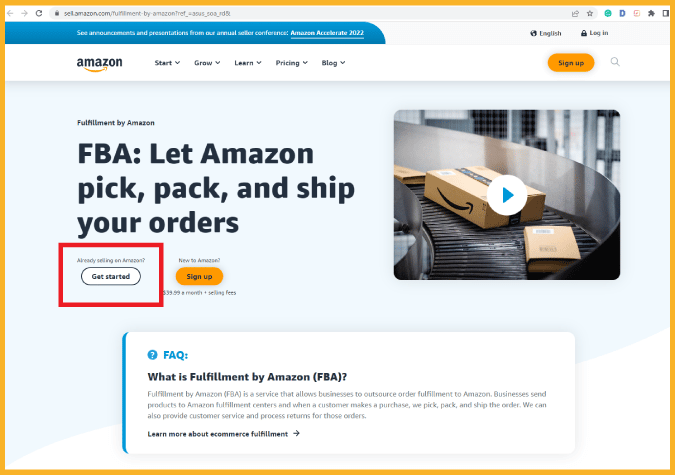
If you don’t have an Amazon seller account, click Register Now to create an account.
You’ll have to submit several forms of identity verification, including photos of your driver’s license and bank account information.

2. Prepare Your Inventory.
The Amazon FBA program stores and ships your inventory for a price. Amazon FBA deals with thousands of sellers worldwide and needs an organized, automated system.
Sellers must prepare their product information for shipping to an FBA center before they start selling. You’ll have to check Amazon guidelines and follow the protocol for preparing items.
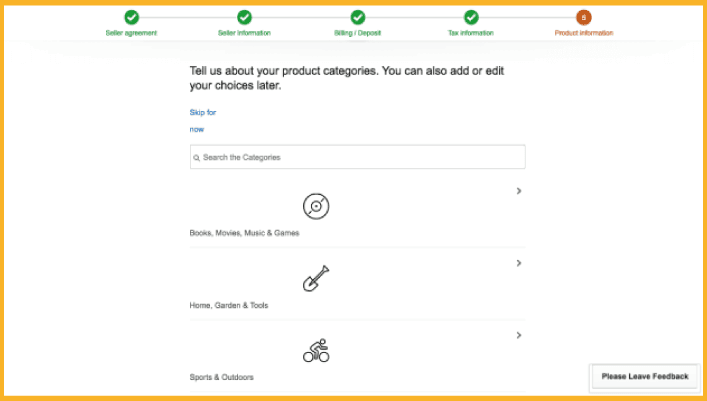
3. Assign and Ship Your Inventory to an FBA Center.
Here are the steps for assigning and sending your inventory to an FBA Center.
- In your Seller Central account, go to Inventory, then Manage Inventory.
- Check the box to the left of each product you want to ship to the FBA center.
- Click Change to Fulfilled by Amazon from the Actions drop-down menu.
- On the next page, click Convert and Send Inventory.
Once you’ve converted your products to FBA, you can go to Manage Inventory. Then, click the relevant products and select Send/Replenish Inventory from the Edit drop-down menu.
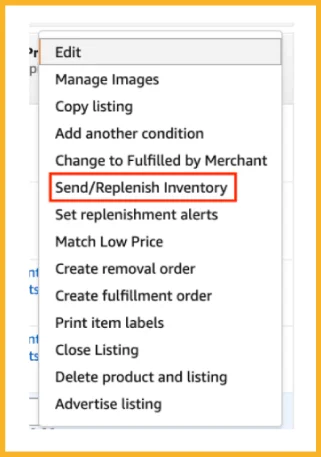
Amazon breaks up your shipments and sends them to several distribution centers, depending on what the company thinks is best.
If you prefer a particular center, use the FBA Inventory Placement Service, which places your packages together in a center for a per-unit fee.

You can also change your settings at any time. Here’s how to do it.
- In your Seller Central account, go to Settings.
- Click Fulfillment by Amazon, then Inbound Settings.
- Select Edit. Click Inventory Placement Option, then click Inventory Placement Service.
- Select Create a New Shipping Plan or Add to an Existing Shipping Plan and fill in the required information.
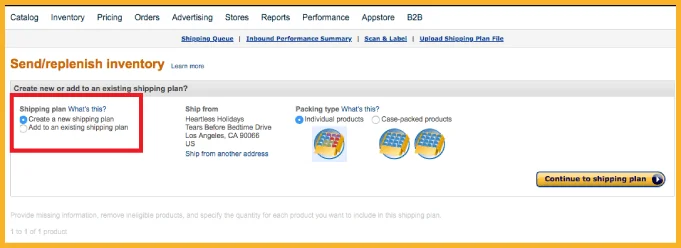
4. Manage Orders
Now that you’ve delegated order fulfillment and shipping to Amazon, you can focus on managing your orders.
You can keep track of your logistics while promoting and selling your products. View your active orders from the Manage Orders page of your Seller Central account.
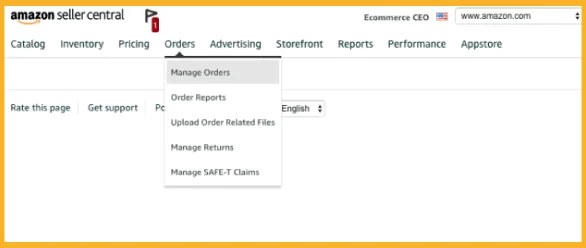
In that section, you’ll see if there are any issues you need to address. You can also access your sales information to help you evaluate and plan your strategies.
3 Tips for Private Label Brands on Amazon
Follow these tips to take your private label business to the next level.
1. Fulfill Your Orders With Amazon FBA
Opting for Amazon FBA is advisable for effective time management. Many sellers use this method for selling private-label products because it frees up their time to focus on marketing and other aspects of their business.
2. Optimize Your Pricing on Amazon
Selling your own brand of products on Amazon is easier if you employ intelligent pricing strategies.
You offer high-performing items with few reviews as an Amazon private-label product seller. Thus, you may want to increase your product’s perceived value by charging a higher price than your competitors.
3. Steer Clear of Seasonal Products
Seasonal products can be highly profitable during holidays or special occasions. Unfortunately, they are not a reliable earner if you want year-round sales for your Amazon private label business.
It’s best to go with products with year-round demand. Examples include fashion and clothing products, pet supplies, supplements, and cosmetics.
Pros and Cons of Selling on Amazon Private Label
Many sellers opt to create their own brand because of its benefits. Here’s what you can expect when you sell private-label products.
| Pros | Cons |
| Brand ownership | High startup costs |
| Customization options | Increased risk |
| Higher Profit margins | Difficulty in establishing a solid brand |
| No Buy Box competition | |
| Increased exposure |
Pros
Brand Ownership
You will be selling a unique brand, which means you’ll have more control over every aspect of your Amazon private label business. You’ll be able to grow and price your products the way you want.
Furthermore, a unique brand and private label inspires trust and confidence in buyers and enhances your credibility.
Customization Options
Creativity in presenting your brand and products is the key to a successful private label business.
You’re selling a high-demand product already available elsewhere, so you need savvy branding and presentation.
Check customer feedback for competing products and assess how to improve your store brand product. You can employ various strategies to outpace your competition.
Higher Profit Margins
Private-label selling allows you to source your products directly from suppliers. Your costs will be much lower than if you simply resell products from other brands.
Reselling products leaves you with a smaller profit margin since the product has already undergone one or several markups.
With private-label products, you’re doing away with the middleman. You’re getting inventory at the lowest possible price, allowing you to achieve a higher profit margin.
2022 has seen a rise in customers’ preferences for private-label products. Nearly 80% of shoppers now prioritize value over brand recognition.
With gas and food prices increasing, more shoppers are looking for ways to save money to cope with higher prices. This has paved the way for private-label products to gain a firm foothold in the market.
No Buy Box Competition
When you resell other brands’ products, you compete with other sellers for the Buy Box. But with private-label products, you will be the only seller on the listing. That’s one less concern for you.
Increased Exposure
Private-label products can significantly increase your store’s visibility, especially if everything in your store is consistent with your brand. You can reach an exclusive audience willing to spend more for quality purchases.
Your branding should be consistent, including your name, logo, and color scheme on your Amazon product detail page and packaging. Brand consistency results in easier recognition by customers.
When shoppers remember your brand, they are more likely to return and purchase again.
Cons
While there are many benefits to selling private-label products on Amazon, there are also challenges.
High Startup Costs
You’ll need significant initial capital to set up your business selling private-label products.
Sourcing from suppliers involves lower costs. However, getting your products directly from suppliers requires a considerable investment because they typically deal with bulk orders.
You should also prepare to spend on branded product packaging and marketing.
Increased Risk
Selling private-label products can bring you steady returns, but success isn’t always guaranteed.
Since you’re relabeling a high-performing product, there’s a high chance you’ll compete against other, more established brands.
Difficulty in Establishing a Solid Brand
Brand recognition can be intimidating when you sell private-label products.
Every detail matters when creating branded products.
You need to invest significant time and effort in researching clever marketing strategies to stand out from the competition and get instant brand recall from customers.
The Bottom Line
I hope my guide makes it easier for you to start and sell your own product line on Amazon.
Remember, creating and selling your own private-label product involves more time and effort than simply reselling a product. However, you can increase your likelihood of success by following the tips I mentioned in this guide.

